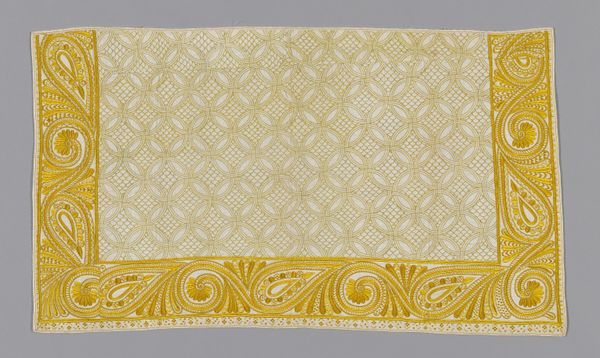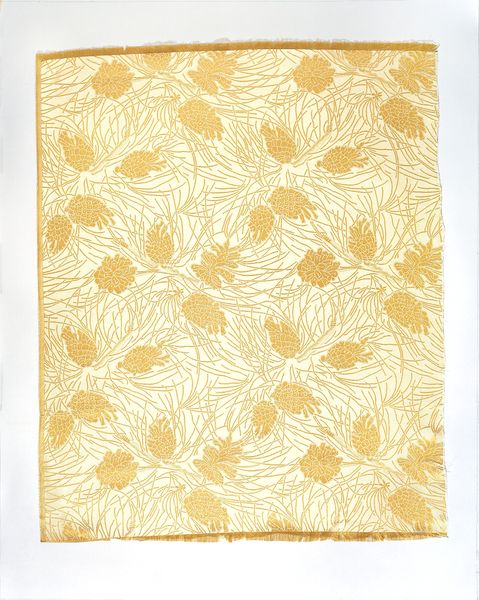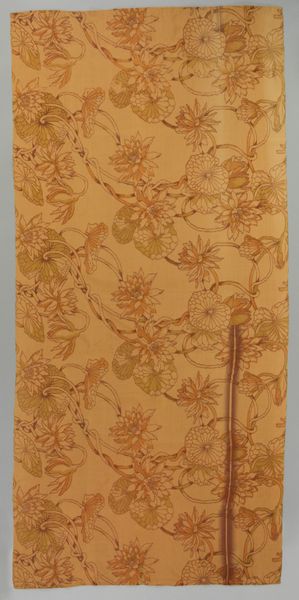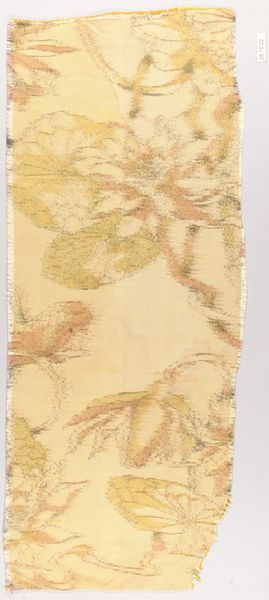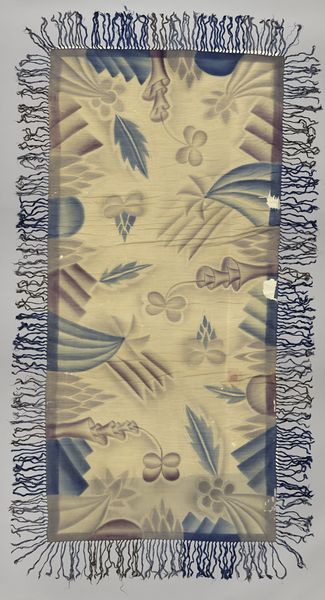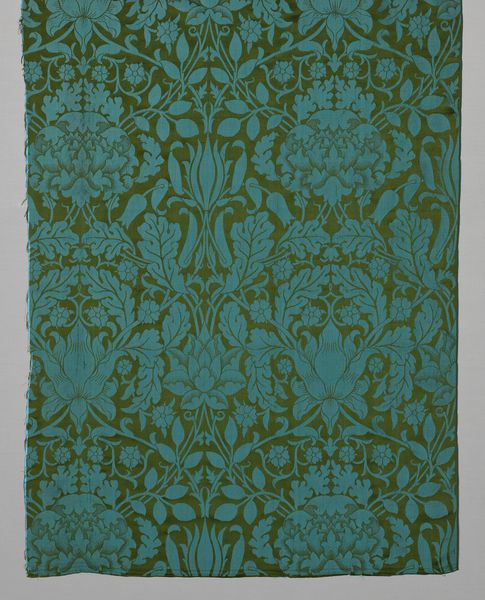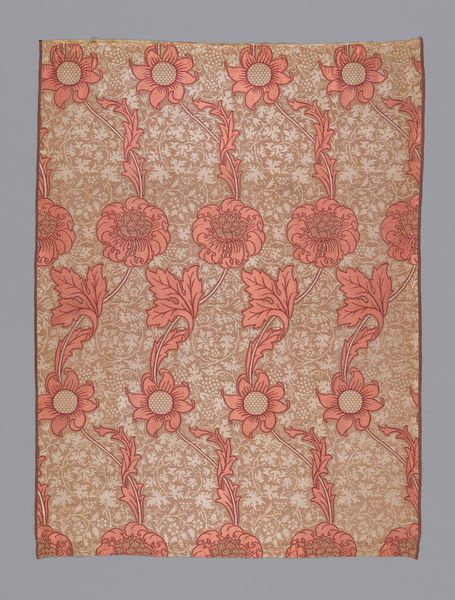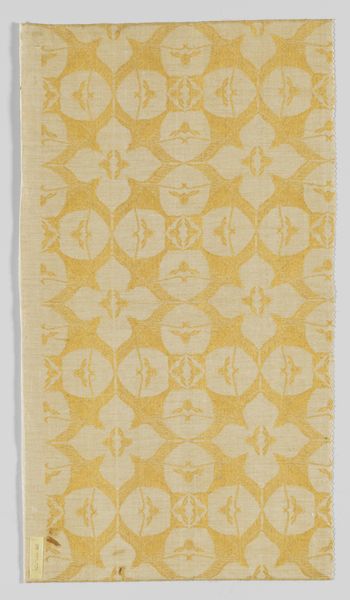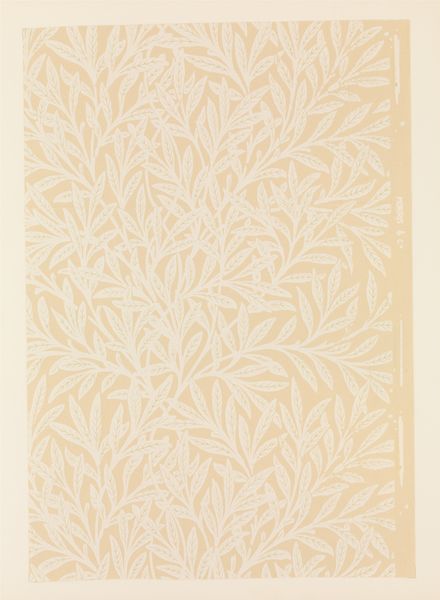
fibre-art, silk, textile
#
fibre-art
#
organic
#
silk
#
textile
#
organic pattern
#
pattern repetition
#
decorative-art
#
rococo
Copyright: Public Domain
This is a panel from a chasuble, an ecclesiastical vestment, made by an anonymous artist with an unknown date. The enduring quality of the fabric allows us to analyze its formal properties. The panel presents a dense, all-over pattern dominated by yellow and white hues. The design is intricate, featuring stylized floral and paisley motifs that create a rhythmic visual texture. This repetition invites the eye to explore the subtle variations within the pattern, yet there’s no central focal point; the fabric’s structure is democratic, offering visual interest across its entire surface. The choice of yellow, often associated with divinity and enlightenment, imbues the panel with a sense of reverence. The shimmering quality of the textile adds a tactile dimension that reflects light, enhancing the visual richness and symbolic meaning of the chasuble. The careful arrangement of these motifs suggests a deep understanding of textile design and its cultural significance. Even detached from its original context, the panel retains a powerful visual presence, demonstrating how form and materiality can convey meaning beyond mere representation.
Comments
minneapolisinstituteofart almost 2 years ago
⋮
Fabrics with this style of design are called “bizarre silks.” Earlier in this century they were thought to have been made in India, but further research has shown them to be the product of an economic war between France and Italy from about 1690 to 1715. During the 17th century, in an attempt to establish French economic dominance in Europe, Louis XIV’s minister of commerce, Colbert, began a campaign to encourage the manufacture of luxury goods. Various incentives, including tax advantages, induced skilled artisans to move to France. Until this time Italy had been the premier silk-producing country. Silk cloth was expensive and popular with the European nobility; dominance in the silk trade represented large sums of money. As the French appeared to be taking over in the 1690s, the Italians made a last attempt to regain the market, creating the unique designs that today are called “bizarre.” This aesthetic style with its large, asymmetrical, undulating patterns proved very popular and designers throughout Europe soon adapted the style. These designs were popular for over twenty years but by the end of the second decade of the 18th century symmetrical patterning was once again preferred. One hundred and fifty years later this aesthetic provided inspiration for the Art Nouveau movement.
Join the conversation
Join millions of artists and users on Artera today and experience the ultimate creative platform.
